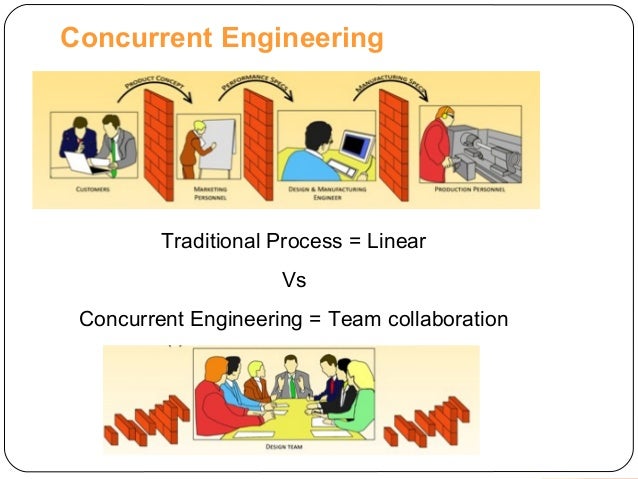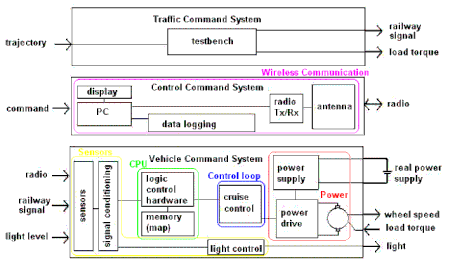Concurrent Engineering Examples
Concurrent Engineering Examples 5,6/10 1938 votes
- Ward A (ed) 1995 Proceedings of the 7 th International Conference on Design Theory and Methodology. DE-Vol. 83, ASME.Google Scholar
- Birmingham W P, Ward A 1995 Special issue: What is concurrent engineering. Artif Intell Eng Des Anal Manuf 9:67–68Google Scholar
- Sriram D, Logcher R, Fukuda F (eds) 1991 Computer-Aided Cooperative Product Development Springer-Verlag, Berlin (Lecture Notes in Computer Science No. 492)zbMATHGoogle Scholar
- Kusiak A (ed) 1992 Concurrent Engineering: Automation, Tools, and Techniques. John Wiley & Sons, New YorkGoogle Scholar
- Sohlenius G 1992 Concurrent engineering. Annals CIRP, 41/2:645–655CrossRefGoogle Scholar
- Birmingham W.P, Ward A (eds) 1995 Special Issue on Concurrent Engineering, Artif Intell Eng Des Anal Manuf 9(2)Google Scholar
- Dertouzos M L, Solow R M, Lester R K 1989 Made in America. The MIT Press, Cambridge, MAGoogle Scholar
- Tomiyama T 1995 A Japanese view on concurrent engineering. Artif Intell Eng Des Anal Manuf 9:69–11Google Scholar
- Ward A, Liker J, Sobek D, Cristiano J 1995 Toyota, concurrent engineering, and set-based design. In: Liker, Ettlie, Campbell (eds) Engineering in Japan, Japanese Technology Management Practices. Oxford University Press, Oxford, UKGoogle Scholar
- Ishii K 1992 Modeling of concurrent engineering design. In: Kusiak A (ed) Concurrent Engineering: Automation, Tools, and Techniques. John Wiley & Sons, New York, pp 19–39Google Scholar
- Finger S, Konda S, Subrahmanian E 1995 Concurrent design happens at the interfaces. Artif Intell Eng Des Anal Manuf 9:89–99Google Scholar
- Boothroyd G, Dewhurst P 1983 Design for Assembly: A Designer’s Handbook. Boothroyd Dewhurst Inc., Wakerfield, RI.Google Scholar
- Yoshikawa H 1981 General design theory and a CAD system. In: Sata T, Warman E A (eds):Man-Machine Communication in CAD CAM. North-Holland, Amsterdam, pp 35–58Google Scholar
- Hubka V 1987 Principles of Engineering Design, WDK 1. Heurista, ZürichGoogle Scholar
- Finger S, Dixon J R 1989 A review of research in mechanical engineering design. Part I: Descriptive, prescriptive and computer-based models of design processes. Res in Eng Des 1:51–67CrossRefGoogle Scholar
- Finger S, Dixon J R 1989 A review of research in mechanical engineering design. Part II: Representations, analysis, and design for the life cycle. Res in Eng Des 1:121–137CrossRefGoogle Scholar
- Newcomb P, Bras B, Rosen D W 1996 Implications of modularity on product design for the life cycle. In: McCarthy J M (ed) Proceedings of the 1996 ASME Design Engineering Technical Conferences and Computers in Engineering Conference. 96-DETC/DTM-1516. ASMEGoogle Scholar
- Tomiyama T 1994 From general design theory to knowledge-intensive engineering. Artif Intell Eng Des Anal Manuf 8:319–333Google Scholar
- Tomiyama T, Sakao T, Umeda Y, Baba Y 1995 The post-mass production paradigm, knowledge intensive engineering, and soft machines. In: Krause F-L, Jansen H (eds) Life Cycle Modelling for Innovative Products and Processes. Chapman & Hall, London, pp 369–380Google Scholar
- Tomiyama T, Umeda Y, Ishii M, Yoshioka M, Kiriyama T 1996 Knowledge systematization for a knowledge intensive engineering framework. In: Tomiyama T, Mäntylä M, Finger S (eds) Knowledge Intensive CAD, Vol. 1. Chapman & Hall, London, pp 33–52Google Scholar
- Cutkosky M, Engelmore R, Fikes R, Genesereth M, Gruber T, Mark W, Tenen-baum J, Weber J 1993 PACT: An experiment in integrating concurrent engineering systems. IEEE Comp 26:28–37CrossRefGoogle Scholar
- Tomiyama T, Xue D, Umeda Y, Takeda H, Kiriyama T, Yoshikawa H 1992 Systematizing design knowledge for intelligent CAD systems. In: Oiling G J, Kimura F (eds) Human Aspects in Computer Integrated Manufacturing, IFIP Transactions B-3. North-Holland, Amsterdam, pp 237–248Google Scholar

Examples Of Concurrent Engineering


Concurrent Engineering Article
Concurrent engineering examples pdf Concurrent Engineering: Research and Applications (CERA) is a leading, peer reviewed journal publishing the newest and most exciting research arising from parallelism of product life cycle functions, covering: New developments in computer-aided concurrent engineering (CE) presented by leading CE specialists.